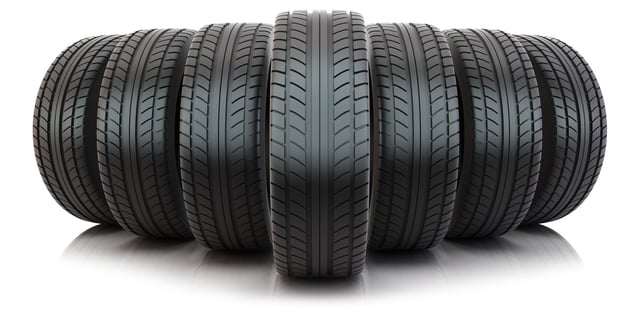
It takes a lot of time, attention, and care to run a fleet of professional vehicles. Not only are you responsible for your cargo, you've also got the safety and security of your drivers and other drivers on the road to consider.
This means that every aspect of maintenance must be carefully monitored, put on a checklist, and checked every single day and relevant maintenance cycle.
While your mechanics may keep your engines in top condition, it's all too easy to forget about the tires. However, as the physical connection between your vehicles and the roads they travel, it's vital that your tires be just as perfectly maintained as your engines.
1) Check Your Fleet Vehicle Tires Every Day
Tire pressure is important, but it's surprisingly difficult to maintain. Tire pressure improves your gas mileage, traction, safety against bumps and potholes, and your cargo efficiency and under certain circumstances, it can drop below optimal in less than an hour.
Even sitting in a parking lot can lower the pressure so make sure to check and optimize your fleet's tire pressure every morning to ensure that each vehicle leaves in top condition.
2) Watch Out for 'Gators'
When you drive for a living, especially driving a big truck, it's easy to start feeling like king of the road. You can see over all the other cars, only crazy people disrespect your buffer zone, and your tires are big enough to roll over most little obstacles. However, if you want long, even tire life there are a few things that any vehicles should do their best to avoid.
What many drivers don't realize is that road gators are almost as bad as potholes for your tires. Road gators are, of course, those big jagged shreds of rubber from where a previous truck has blown or shredded a tire and the pieces are still in the lanes.
3) Rotate Every 5,000 Miles
Because your car isn't perfectly quadrilaterally balanced, your tires wear differently at different positions. Rotation ensures that they all wear at the same rate so that they will need replacing at approximately the same time.
The standard rotation schedule for tire rotation is anywhere from 5,000 to 8,000 miles. The tire brand you use may also have a recommendation for rotation schedule.
4) Inspect After Every Trip
There are a lot of small objects on the road. Most of them are too small for a driver to notice but your tires still hit them. From uneven pavement and mini-potholes to tiny rocks and debris, it's all too easy to take critical tire damage and not even notice until a blow-out the next day.
Inspect the tires of every rig either when it comes in or before it goes out to ensure that no one drives a vehicle with dangerously damaged tires. Don't forget to check the wheel as well, just in case a particularly nasty pothole left a dent that needs to be repaired.
5) Recap When the Tread Wears Down
Finally, the tread on your tires is the most important part of traction and road safety and should be checked during your regular tire inspection. To check the tread, carry a penny and insert it into a tread groove with the head pointing down. If the tread is shallow enough that you can see the top of lincoln's head, it's time to replace them.
But don't just chuck them into the trash. Good, thick-bodied tires can actually be retread for a second and sometimes even third lifespan with new tread. This process is called recapping and is a great way to get the most out of every high-quality tire you invest in.
For more fleet management tips, contact us today!
